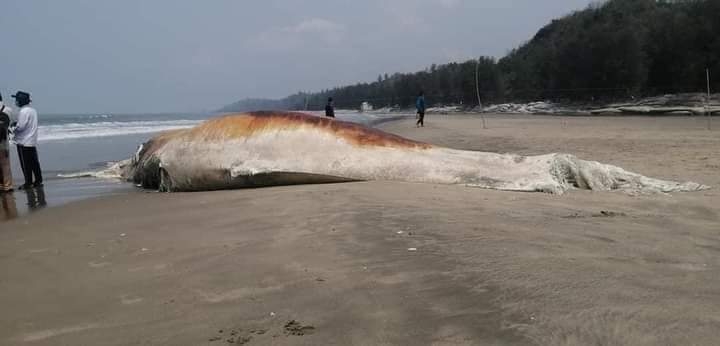
The death bodies of two Bryde’s whales floating in tidal water found on a southern Bangladesh beach on April 9 and 10 for two consecutive days. It carries a worrying message in protecting the biodiversity of the Bay of Bengal.
The natural eating habits of this type of whale and roaming area is in the deep sea. It does not come in shallow water normally. The migratory movements of this type of whale in the South Pole are the Swatch of No bottom of Bangladesh, Sri Lanka, Madagascar, Andaman and warm regions of Oceania and the Pacific Ocean.
The cause of death may be trapping of ghost nets, the presence of plastic and non biodegradable objects in the stomach, or a depth charge for submarine explosion under water. The death can also caused by bacteria, fungi, viruses, parasites, wild or mechanical collisions.
Bryde’s whales have a wide array of novel behaviors to catch prey. They catch school of small species of fish and some other small animals in the filter feeding system. Although their foods remain under deep water in the sunlight and come to the surface again in the moonlight. At the night time there may be a collision with the ship.
It is important to conduct an autopsy to find out the exact cause of death. The cause of death can be in our water area or beyond our water area. If it happens in our area then we have to take necessary steps accordingly. And if it happens in another country, then Bangladesh has to try to remedy the problems in the international arena as well.
The future plans of Save Our Sea, a marine conservation organization in Bangladesh, are to conserve marine biodiversity with the help of veterinary, underwater explorers, and ocean scientists to address marine inconsistencies as there is no visible work to protect the marine biodiversity of Bay of Bengal. To work out legal issues for the rescue, treatment and identification of injured marine animals and addressing the elimination of marine pollution and conservation awareness of marine biodiversity are also the Save Our Sea’s plan.

